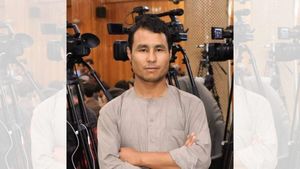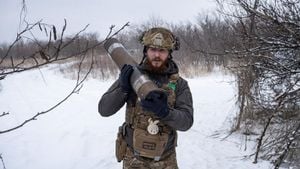Boeing's Starliner spacecraft marked a significant milestone on September 6, 2024, as it successfully undocked from the International Space Station (ISS) and began its return to Earth. This uncrewed mission is part of Boeing's Crew Flight Test (CFT), which has faced several challenges since its inception.
The Starliner began its undocking process at 6:04 PM EDT, gracefully separating from the ISS approximately 260 miles above central China. After its undocking, the spacecraft deployed its thrusters to adjust its orbit and prepare for landing, which is anticipated to occur around 12 AM EDT on September 7 at White Sands Space Harbor, New Mexico.
Nasa and Boeing communicated live updates, with astronaut Sunita Williams, who was on board the ISS during the undocking, announcing, “She’s on her way home. Congratulations to the undocking team.” Williams is one of the astronauts featured during the CFT of the Starliner, which attempted to return home sooner than planned due to concerns about the spacecraft's thrusters.
The Starliner's path home had been well-documented, and its live stream commenced at 10:50 PM EDT, giving space enthusiasts around the globe the opportunity to witness this historic landing. Prior to undocking, the spacecraft had completed its primary mission, which involved conducting various tests to prove its systems worked correctly.
The Starliner was initially launched on June 5, 2024. Though it was meant to simulate a mission carrying astronauts, the decision to return it without crew was made after identifying issues with its thruster system. This strategic move aimed to prioritize safety, allowing the spacecraft's design and systems to be tested before certifying it for future crewed flights.
Upon its launch, the Starliner experienced difficulties, including faulty thrusters and helium leaks. These issues prompted mission planners to extend the CFT mission after initial testing, which had originally been slated to last just ten days. Instead, it evolved over almost three months of extensive evaluation and troubleshooting.
Prior to the CFT, Boeing’s Starliner had faced troubles during its two uncrewed test flights. The first one, conducted back in December 2019, failed to reach the ISS due to various technical glitches. The second flight, completed successfully, also showed problems including thruster malfunctions. Nevertheless, these challenges were effectively addressed, leading to the execution of the CFT.
NASA awarded Boeing and SpaceX contracts worth several billion dollars back in 2014 to develop crewed spacecraft capable of transporting astronauts to and from the ISS, following the retirement of the Space Shuttle program. While SpaceX has already conducted multiple crewed flights successfully, Boeing worked diligently to resolve technical snags threatening to delay Starliner's certification.
The spacecraft's design included sophisticated safety features, which have been evaluated through detailed simulations. These procedures allowed NASA to certify new entry modes and configurations for Starliner, modifications made to increase reliability during reentry.
Another major test for Starliner involved following its landing plans, which included executing important thruster tests and gathering data on its performance during descent. This data collection continues to provide valuable insights for when crewed missions will resume, predicted if all goes well, later next year.
Plans for the eventual return of astronauts on board Starliner remain uncertain as NASA has opted for them to fly back to Earth on SpaceX’s Crew Dragon capsule instead of Starliner, due to the previously mentioned issues. NASA has emphasized the importance of ensuring reliable spaceflight systems to guarantee astronauts' safety.
Fans of space exploration eagerly awaited the Starliner landing and have shared their excitement over the successful undocking and upcoming reentry. Many had followed the mission through live updates on social media and streaming platforms, with discussions on forums expressing hope for the crewed flights being just around the corner for Starliner.
The future of Starliner hinges upon the analysis of the data collected during this mission. NASA and Boeing plan to conduct assessments thoroughly to identify any remaining vulnerabilities, ensuring next steps are safely executed.
This landing at White Sands Space Harbor not only demonstrates Boeing's commitment to reinstilling confidence in its space systems but also highlights NASA's focus on fostering innovation and reliability within commercial partnerships for human spaceflight. The lessons learned from Starliner's deployment and return could significantly influence the future of all American spacecraft, with astronauts' safety being the top priority moving forward.
While the Starliner's uncrewed landing is just the beginning of what could be many more successful missions to follow, it is clear this marks an exciting time in the future of space exploration. Stay tuned to NASA's channels for the live stream and updates as the Starliner makes its way back home to Earth, paving the way for what lies next for spacecraft development and human missions.



